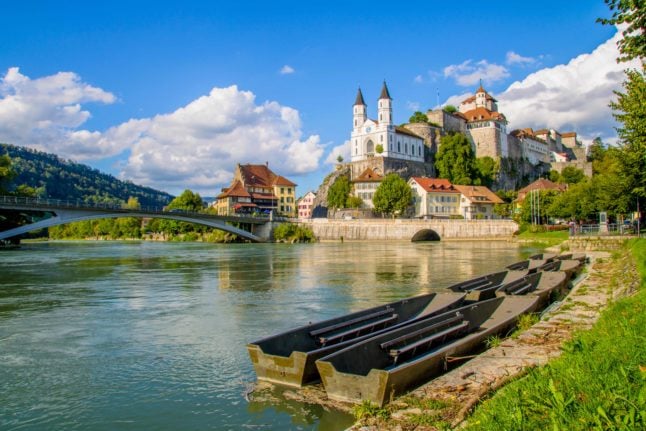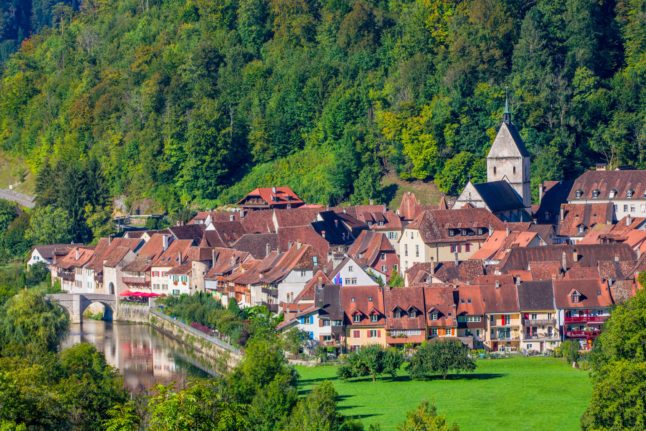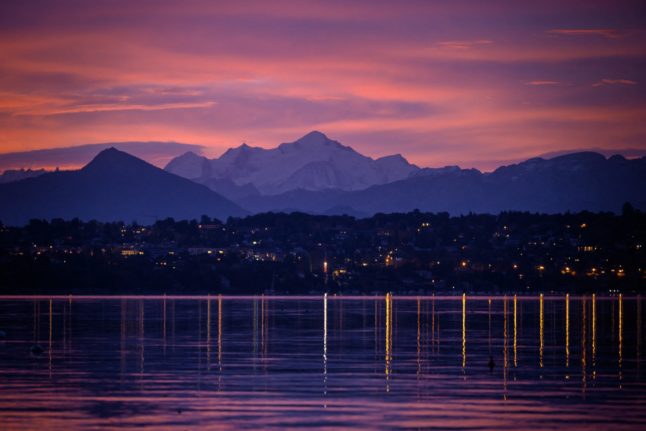Just a few kilometres from the cultural capital of Switzerland, there are little gems to be discovered any time of year.
These five villages have been selected by “Les plus beaux Villages de Suisse” (The most beautiful Villages in Switzerland), an organisation which aims to protect and promote those villages and small towns that have a distinct architectural, landscape and historical beauty.
Whether you seek to discover them in just one day or combine them together, a pleasant journey awaits you!
Don’t live near Basel? Check out the following links for more beautiful Swiss villages.
Five beautiful Swiss villages located less than an hour from Zurich
Six beautiful Swiss villages located near the Austrian border
Aarburg (AG)
On the banks of the river Aare, in the midlands, majestic Aarburg Castle can be seen perched on a rocky spur. This old medieval town lies at an important Swiss crossroads.
On either side of the castle are two historic quarters with different atmospheres and designs. On one side, in the shape of a triangle, the narrow old town with its colourful houses forms a picturesque ensemble around the elegant fountain. Next to the town hall, a local history museum tells of the exciting history of this incredible town and Its famous visitors.
Must see: the banks of the river Aare and the majestic castle.

Büren an der Aare (BE)
The former trading town on the river Aare is a little-known gem with a magnificent old bridge and one of the most beautiful mills in Switzerland. Büren delights visitors who stroll along the banks and explore the old town, which consists of typical Bernese houses from the 17th and 18th centuries.
The small, characterful town with its compact, triangular centre is on the list of national heritage sites and offers a variety of attractions. The first of these is the Hauptgasse with its arcades, fountains and the town hall with its beautiful Gothic façade. The many historic buildings stand out for their variety of colours and ornate signs.
Must see: The banks of the river Aare showcase the typical Bernese houses.

Porrentruy (JU)
The fairytale castle dominates every corner of the town, which is the cultural centre par excellence of the canton of Jura. The stained glass windows of its churches are among the most impressive in Europe.
With its elliptical shape, the historic core of Porrentruy has been wonderfully preserved and forms a quite exceptional unified architectural heritage.
The Grand-Rue is made up of bourgeois, Gothic, Baroque and neoclassical houses; not to mention the countless monumental fountains, famous residences and free-standing buildings.
Must see: The fairytale castle and the Grand-Rue.

Saint-Ursanne (JU)
The best-preserved medieval village in Switzerland invites you to discover its ancient monuments: the collegiate church with its cloister, the Hermitage of Saint-Ursanne and the bridge over the Doubs River.
The centre of the village is reached through three fortified gates. Its treasures are therefore well guarded: a collegiate church with a magnificent cloister and small houses with colourful shutters huddled together.
But also charming fountains, a medieval garden, four small rustic and friendly hotels and completely repaved alleys that immerse the visitor in another time.
Must see: The beautiful ancient bridge, the lovely cloister (see featured image above).
Luthern (LU)
In one of the greenest valleys in the canton of Lucerne, far away from traffic and noise, this rural village exudes serenity. Luthern invites you to experience the surroundings on foot or by bike.
The attractive village is a model of pastoral harmony and poetry. Located in the midst of a spiritual landscape in central Switzerland, it has also been a place of pilgrimage since a miraculous spring was discovered in the nearby hamlet of Luthern Bad.
This village is the starting point for many walks through the pastures where the dairy cows produce the famous Emmental cheese.
Must see: The old wooden houses and the many beautiful small chapels.

All of these villages and many more feature in the Les plus beaux Villages de Suisse free app available in English for iOS and Android.



 Please whitelist us to continue reading.
Please whitelist us to continue reading.
Member comments